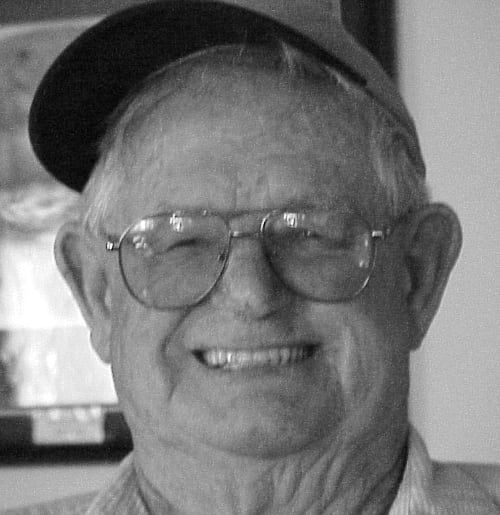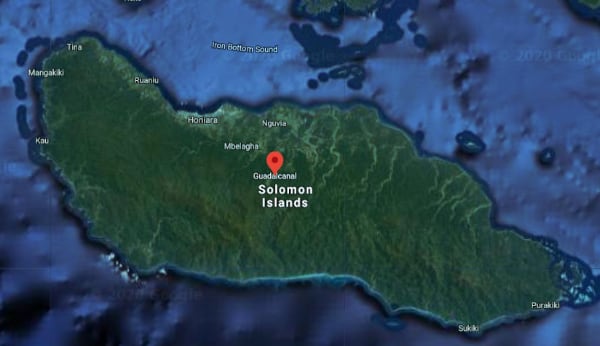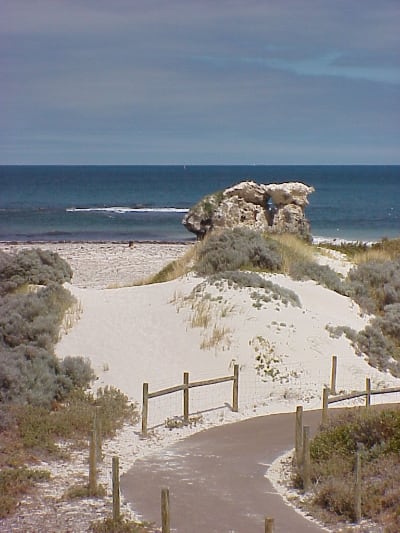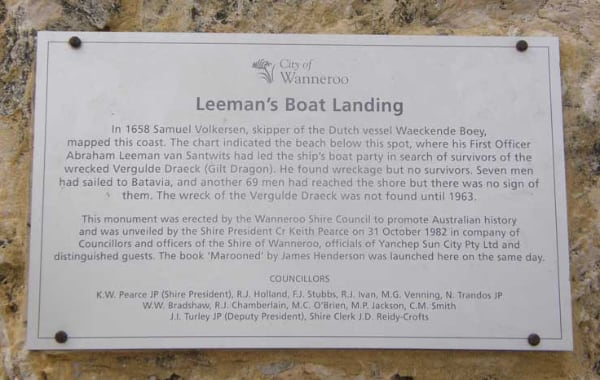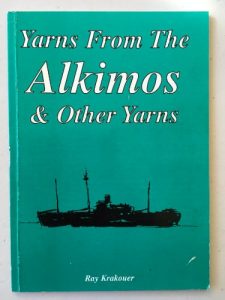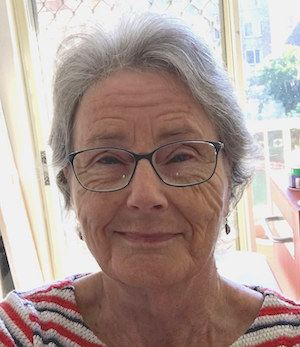© Keri Webb
“Just to have somebody to talk to…”
Old timer, cartoonist and writer, gatherer of memorabilia and local history,
Ray Krakouer tells his story.
Meet Ray Krakouer and you sense it – somewhere there behind the friendly smile and twinkling eyes, beneath the fisherman’s cap that’s seen a storm or two, beyond the broad and friendly handshake – there stands an ancient mariner with a tale or two to tell.
Few are the old timers who have lived in the Yanchep and Two Rocks area longer than Ray – hardly a handful, and few with more stories to tell.
“There have been many good people – yes, this area has spawned some very good people.” he confides.
“Mighty Men” he calls them. “Jack Sue, Bob Hugal, De Lacey… .. ”.
If you think you see their shadows here, you could be right.
From Tuart Hill they came, Ray’s family, in the days of the 1920s when travelling then – like most things – took a little more planning and a little more time than it does today. They came to holiday at Yanchep Beach. The fresh air, the boats, the fishing, the way of life, and the broad blue sand-scalloped Indian Ocean called to people then, just as they do today. It captivated Ray, and he fell in love with the place. It was to be a love affair that lasted a lifetime. But many years before he would return to live – not until after the war.
The Second World War saw the young Ray, along with so many thousands of his fellow countrymen, stand proud to defend Australia against the unthinkable. For then, that meant the 28th battalion and the Solomon Islands. For now, with memories buried deep, you sense they somehow seem far better served, left where they fell, on distant shores. The map tells all we need to know, the Solomon Islands ring Guadalcanal.
“I’ve travelled the world”, says Ray, “and there’s nowhere like here. Nowhere. Soon as you hit the Yanchep National Park, you can feel it. Home! You’re coming home. You can feel it, can’t you?”
And on the walls of home – the house Ray built himself – the digger’s hat, the Darwin flag, the two guitars, the cartoons and the letters framed, the ancient sailing ship. And the parrot in a cage? Yes, that’s there too, but as you might have guessed that’s quite another tale… .. .
Still Ray is never short of a yarn to spin, “And many of them are true,” he’ll grin. Just like his cartoons, they’re often edged with gentle humour, rich in the tradition of matesmanship, the old Aussie bush camaraderie.
“It was in the early days, before the First World War … ,” Ray tells this tale his dad once told, about the one legged man who would go round with a horse and cart to collect bat droppings – a valuable fuel and fertilizer then – from the caves. Try to imagine it – early 1900s, tough times have come, and there’s a wife and a handful of kiddies to feed, there’s no money, no social welfare to fall back on, and it’s a long time before anything like our modern medicine comes available. To live that life, what would that have been like?
In the early 1960’s when Ray first came to Yanchep to live, the place looked very different to today – bush mostly. Completely undeveloped. There was no electricity, no water, and many of the trees we see now have since been planted, so it was far more scrubby then. There were just a couple of other full-time residents, and a few crayfishermen’s shacks, but precious little more to be seen than the bush, the sand, the sea and the sky.
“There were more rabbits then,” Ray says, “and maybe more echidnas and snakes – dugites. There were no larger animals around though, and the reason is that there were the shooters then. They came for rabbit and ‘roo shooting. And there were wild brumbies here then, but most of those old brumbies would have been shot for meat.”
Cattle had just about finished when Ray got here – cattle driven down to market, down to the local stockyards from properties way up north, great dust-raising herds driven immense distances by a wiry breed of drovers along the old stock routes. All a part of history now, all part of a Western Australian way of life that survives today as little more than the memories of a few.
“One thing I always remember,” says Ray. “When I’d just started to build my house, there was no power. I just had a battery wireless. And I got up this morning to go fishing, and – Quinns, or was it Burns Beach – two teenagers found dead in their car. Gassed themselves! Young man and his girlfriend. Little girl might have been pregnant, I don’t know…
“That was 40 years ago,” says Ray. “Always stuck in m’mind. So – just to have somebody to talk to. Say how yer goin’, have a cup of tea. Just t’say g’day, y’know?”
If someone’s got problems, “No use giving advice.” says Ray. “Just listen, let them talk. Everybody has the wisdom of Solomon within themselves, if they just stop and listen to themselves. Who is it that can give you advice? Yourself. Your conscience. If you listen to it. We’ve all got wisdom of Solomon in us.”
“So the cattle had all gone, but there were the sheep,” Ray picks up the thread. “They were bringing them down in their thousands. And they’d walk round and round those hills you see there, round and round, eating it all up. They got growth on them now, but you’d see all little spirals all the way up them then, eaten all down. And the dogs got into them of course.”
And because the dogs had gotten into them, and the sheep were there “walking round with their insides hanging out”. Ray would go and cut their throats just to put them out of their misery.
“Devastated the bush, y’know, the sheep. So they had to replant it.”
For fifteen years, and as something of a loner, Ray lived in the house he had built, grew his own tucker, and now and then would trap a rabbit or catch a fish. For anything else he needed, maybe once a week or so, he would drive his ute into Wanneroo.
“Interesting thing is”, says Ray, “I forgot how to talk”.
He grins. “I’d lived by myself so long, I forgot how to talk. And now?” Almost not believing it himself he adds, “You can’t shut me up. Can you dear?”
It’s a situation he fondly blames on his wife, offsider, and best mate Maggie, who’s never far from his thoughts.
“At that time, up to 20 cray boats could be seen moored in the lagoon”, Ray recalls. “Probably still some of those old moorings there under sand.”
Once inside the lagoon and safely moored, the boats of the cray fishermen had reasonable protection from the often unpredictable weather. But look at the lagoon now and you wonder how so many boats could fit inside such a small space.
“But just the fact that they were moored there,” says Ray, “tended to deepen the lagoon”.
In order to get into the lagoon at all, the boats would have to come in from the north. And there they’d all be, all lined up and anchored into the wind. It must have been quite a picture.
Then up at Two Rocks, well there wasn’t much there either, nothing but about a dozen fishermen’s shacks. And near to Leeman’s Landing, there was a jetty there, where more cray boats could moor “behind the reef, and south of South Rock – good mooring there. Mighty men there too.”
Back at the Lagoon, Ray remembers the Ellistons, who “had the beach kiosk where the present one stands, an iron building that used to cater to quite a lot of locals.” And almost as an afterthought, “Once there was a whale washed up there.”
Crayfish season and Fisherman’s Hollow would be a busy scene. Back behind the Lagoon and well protected from the weather, today this pretty little picnic area was where the cray fishermen and their wives and families would camp. Eric Polfrey was one of Ray’s mates there, and Ray conjures up the scene:
“He was a cray fisherman, a good bloke. Interesting thing. He had a carvel-built vessel called The Timor, a 30 footer. And this day, he was coming on in very slow … I remember, I was at the top of the lagoon, and there he was. Very slow, he was coming in very slow … came in over the second bank, slow as anything … and I was thinking what the devil, what’s the matter with the thing … I thought there was something the matter with the boat. Actually, he was towing a great white pointer shark! Almost as long as the boat. Ha ha! He’d hooked it, got it on one of his set lines, and just as he’s coming into the moorings, inside the lagoon, the towline – the shark dropped off the line! He lost it!”
And of course when it comes up, and when he says – ‘the shark I was towing in’, and I say – “What shark!”… … And so it’s always a bit of a joke y’know … … Oh yeah, the one that got away – poor bloke been towing it about 6 mile!”
Years ago when we lived in Two Rocks, we met Ray and he became quite a mate. Ray lived just down the road from us in Yanchep, and was quite the teller of tales. These here are just a few of his reminiscences … his stories … all far too good to not be passed on. And many more to be found in the book he wrote and cartooned himself, Yarns from the Alkimos.
© Keri Webb
Keri Webb is a retired nurse, an artist and author with an interest in the lives and characters embedded in history.

